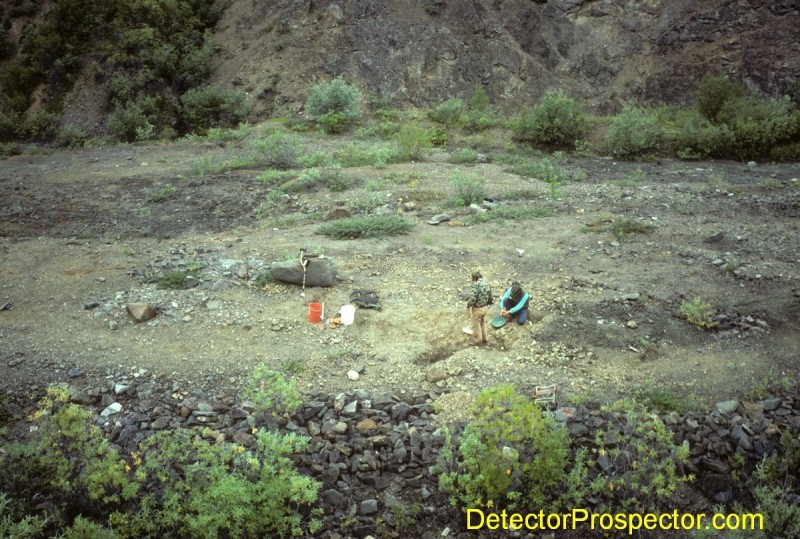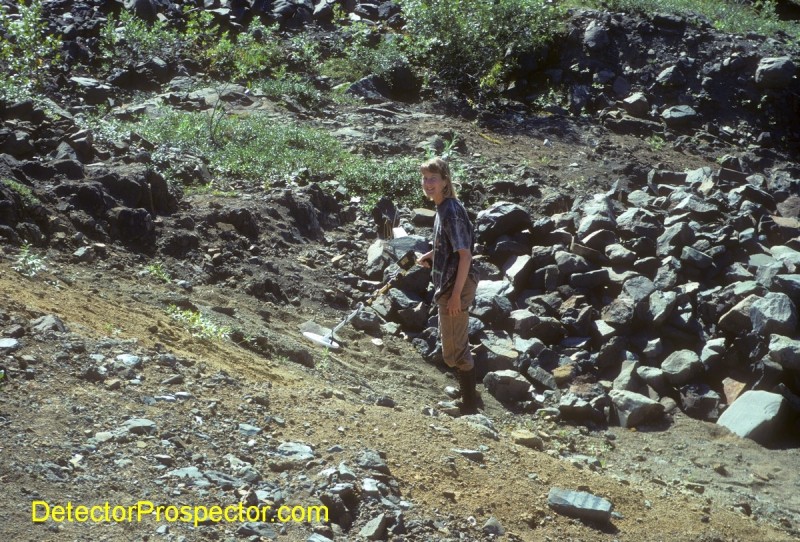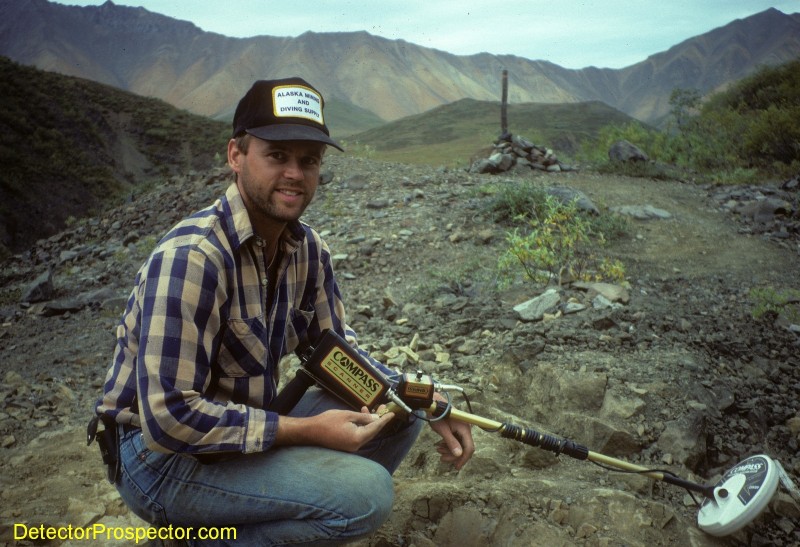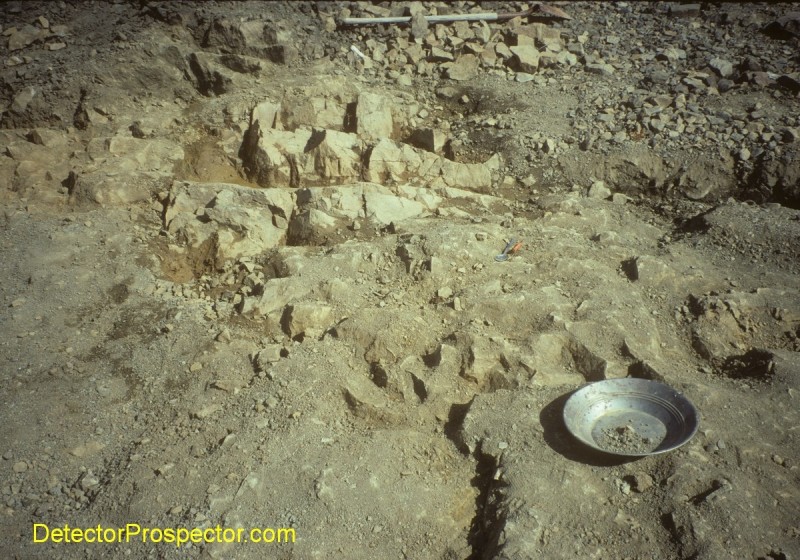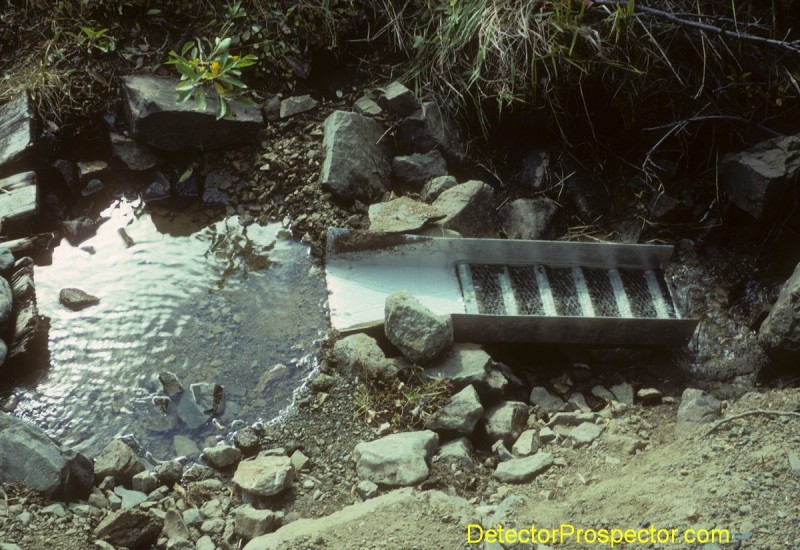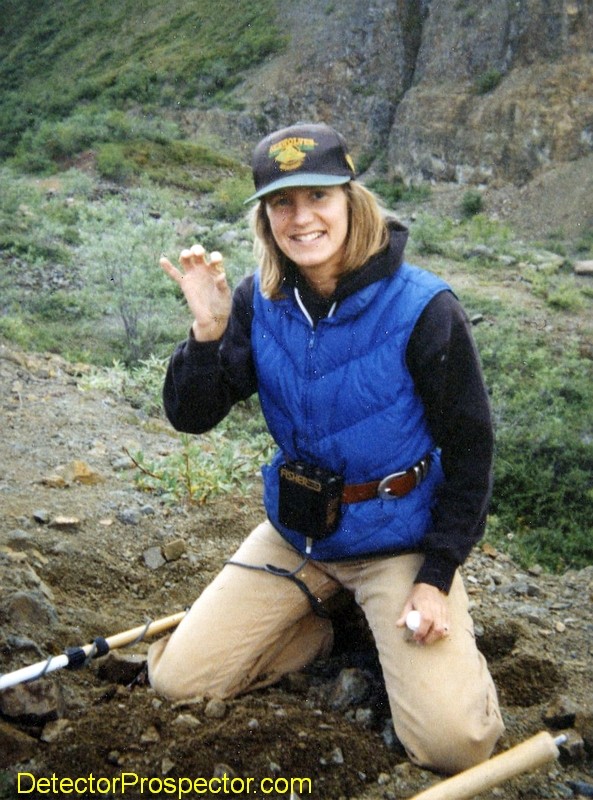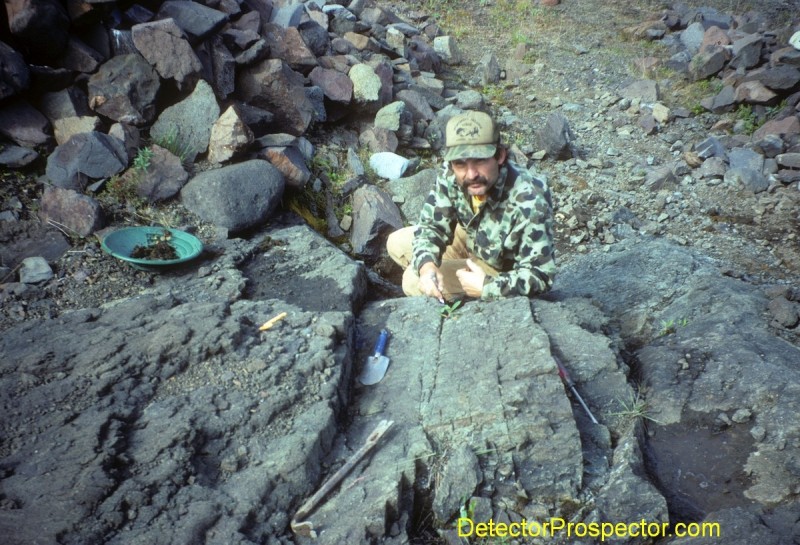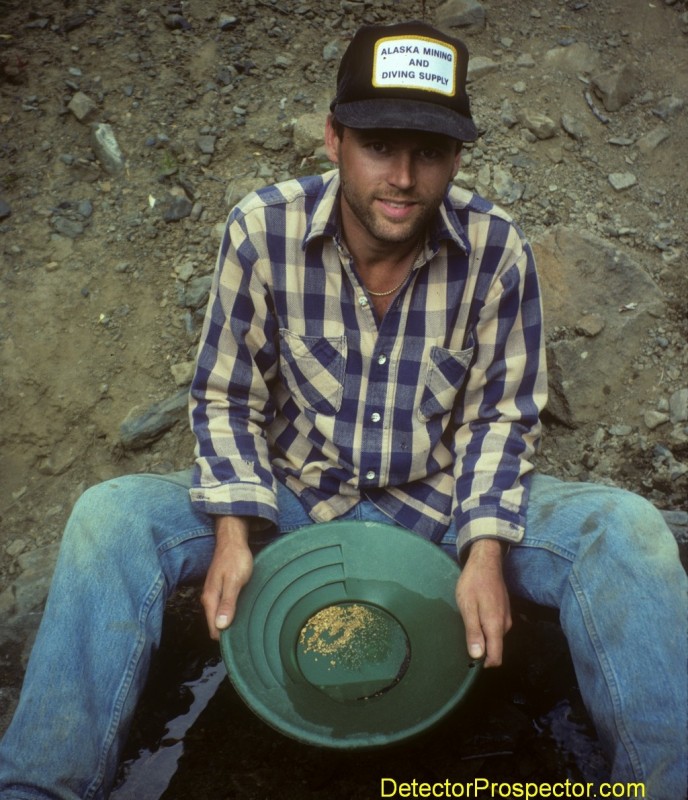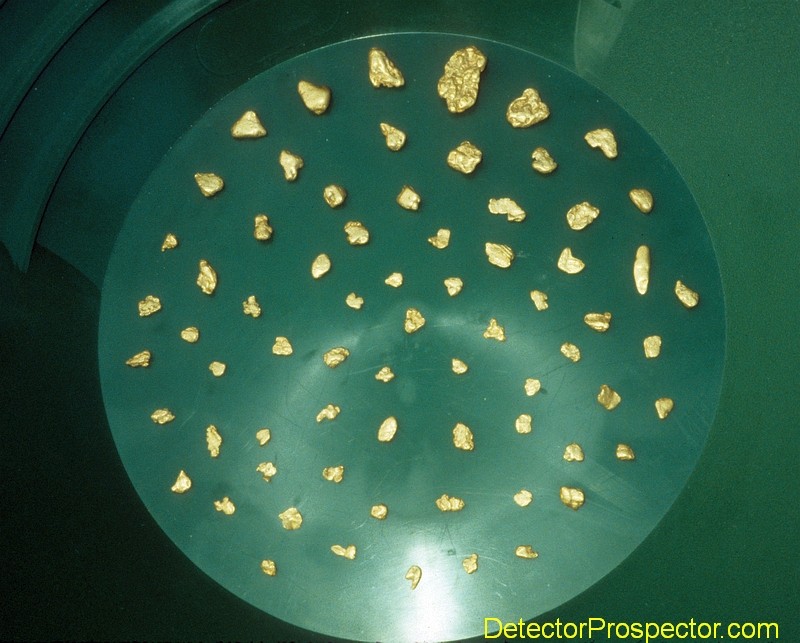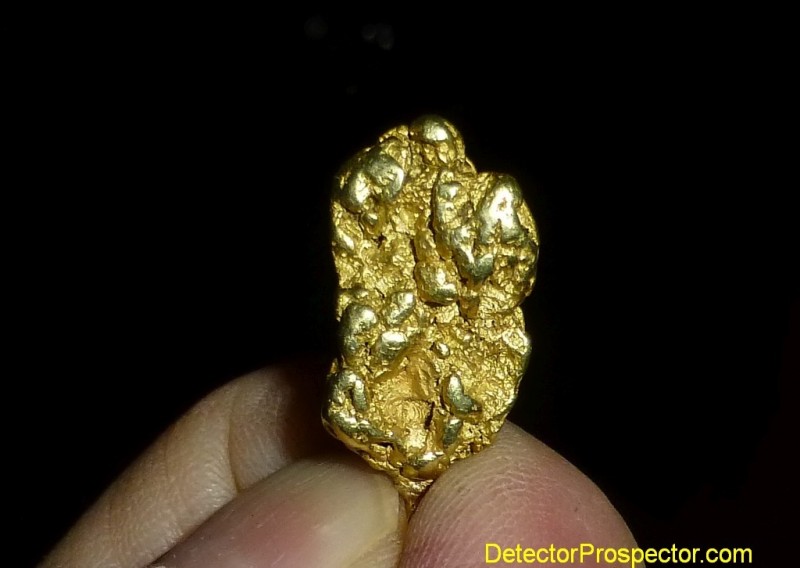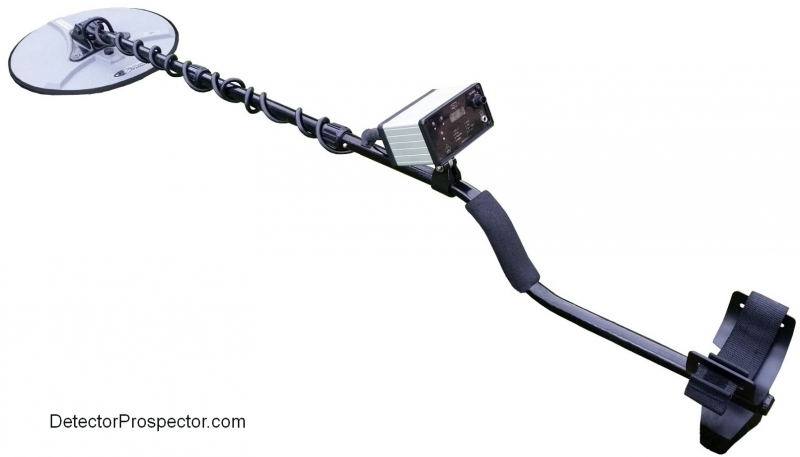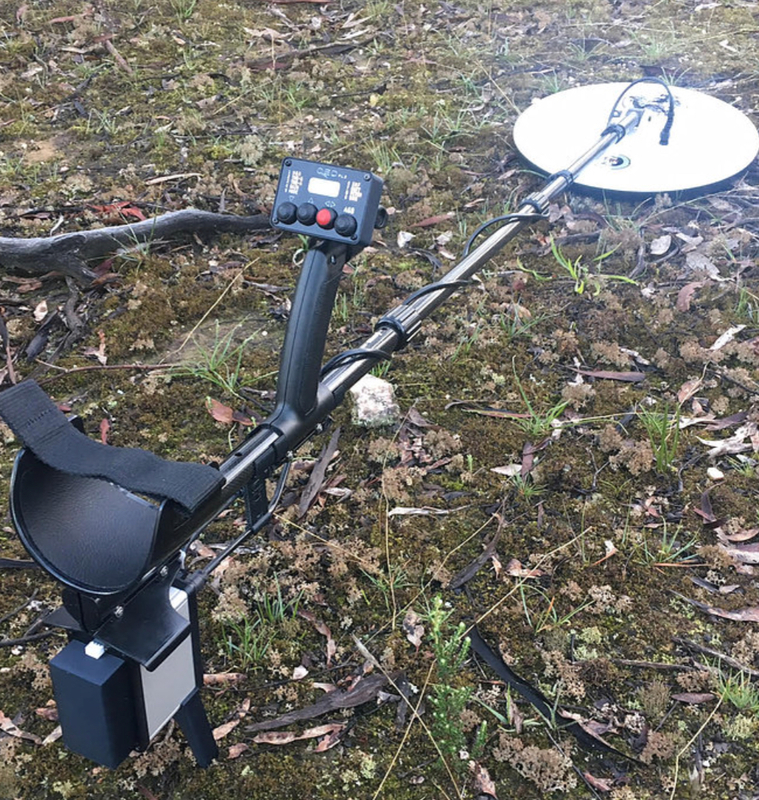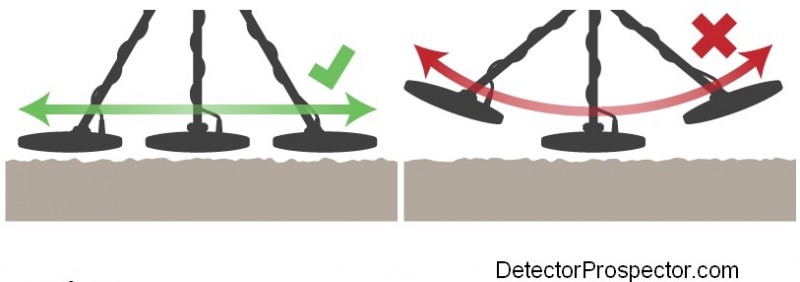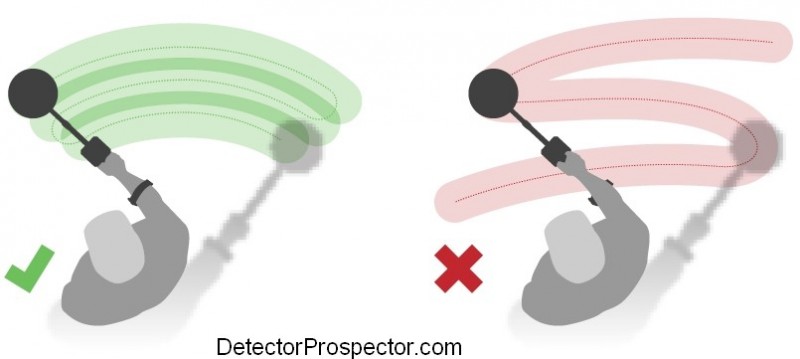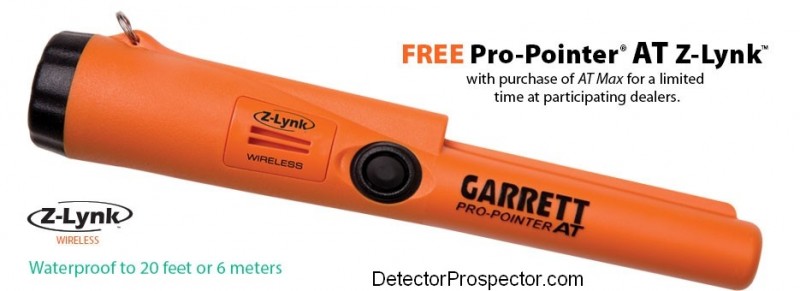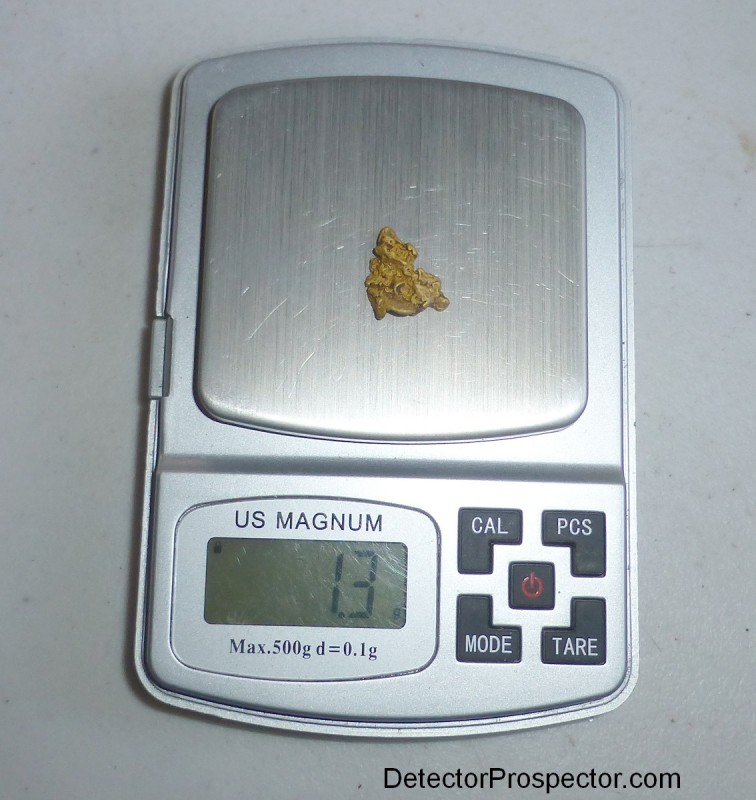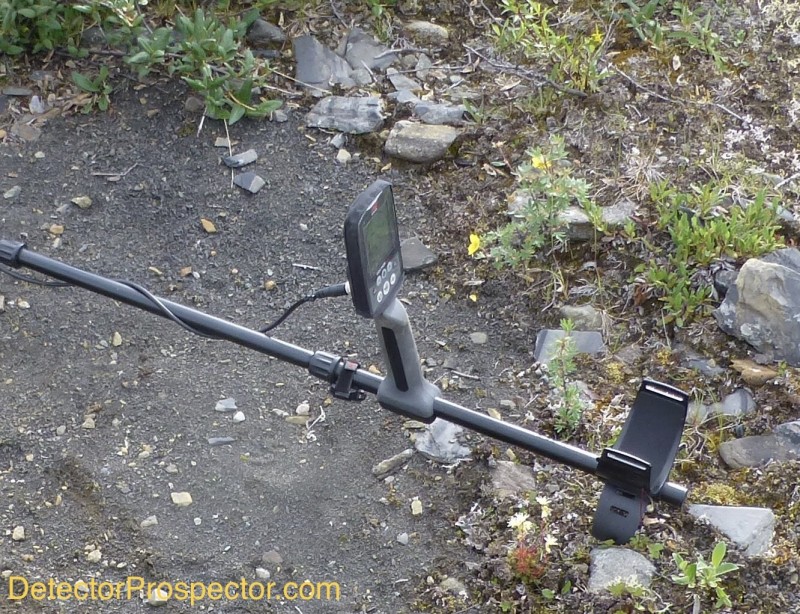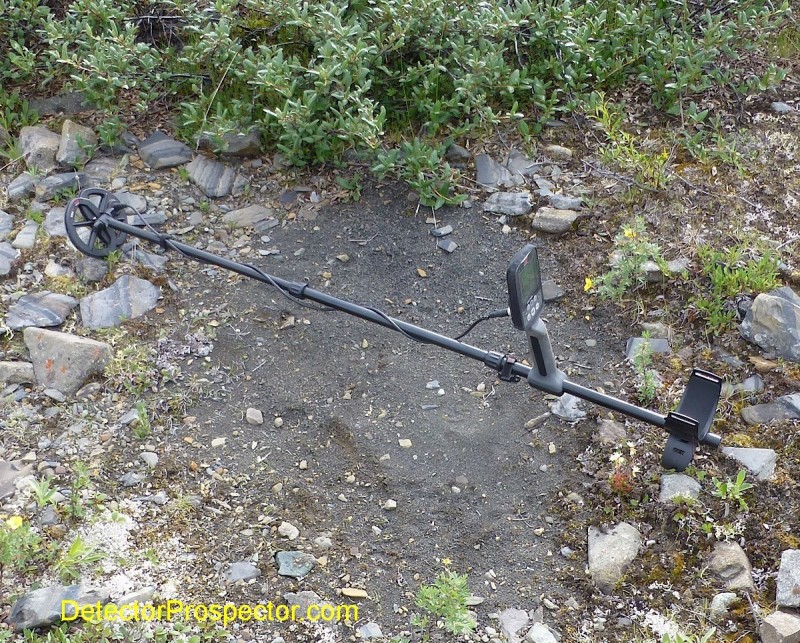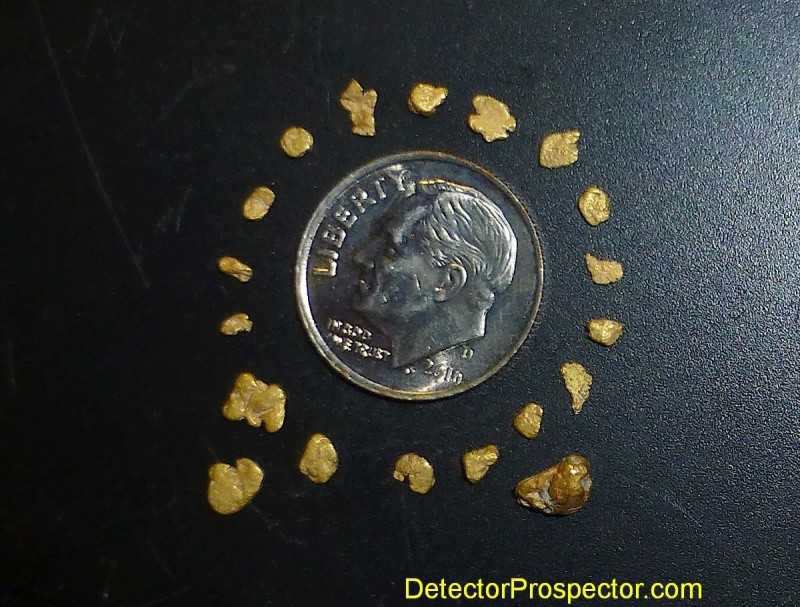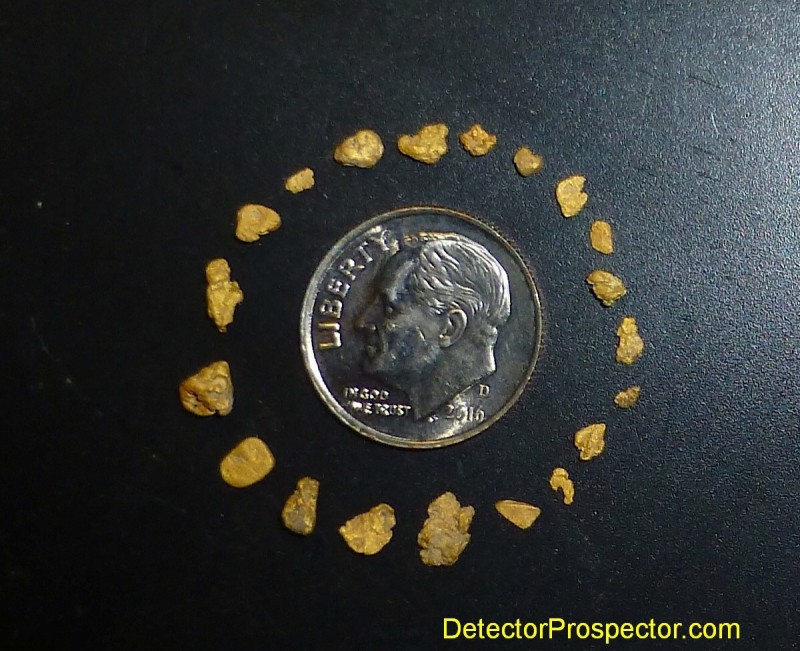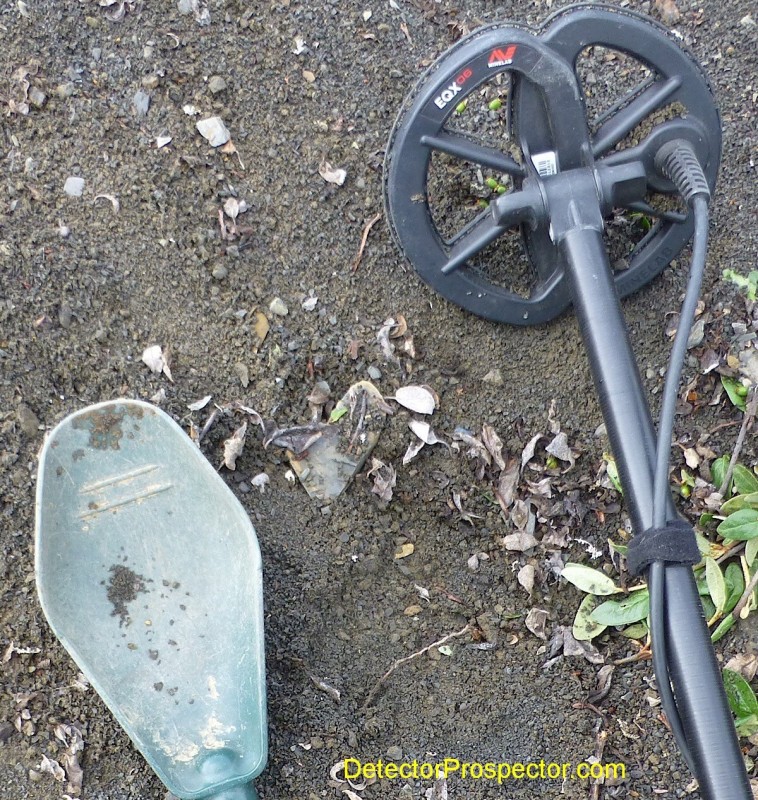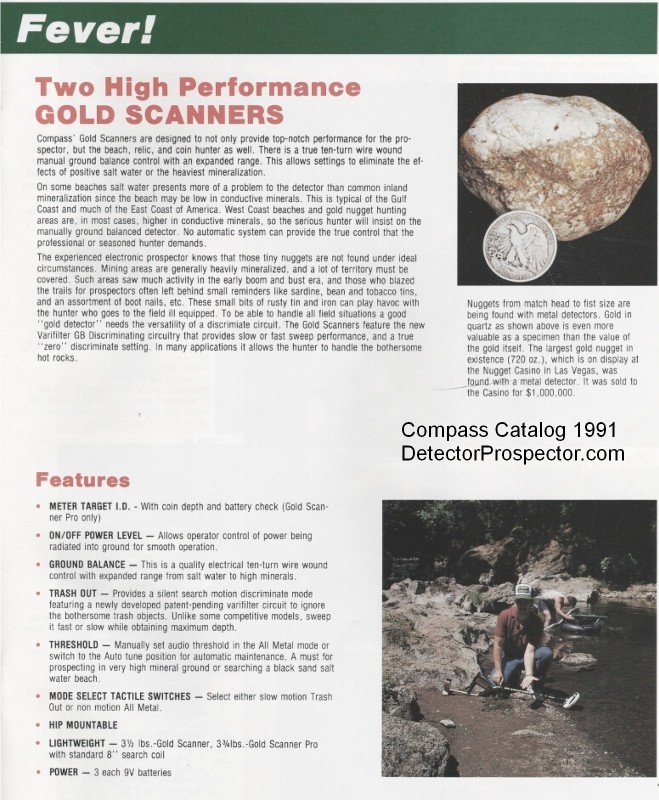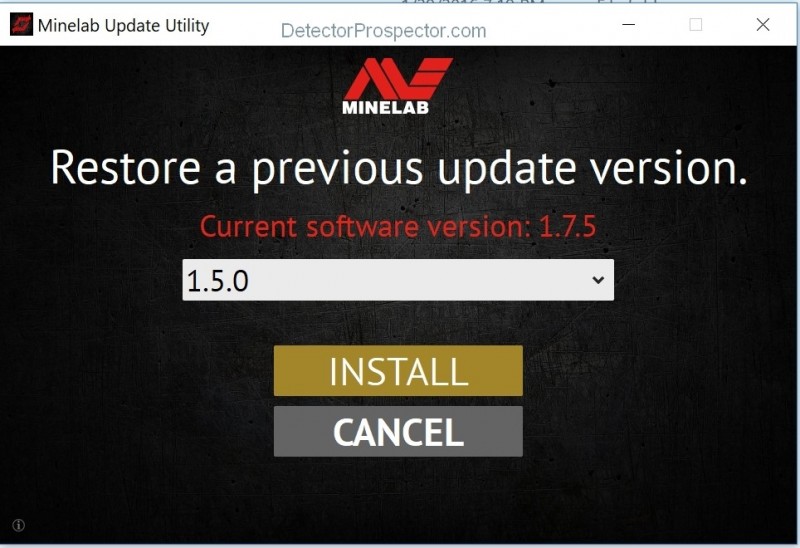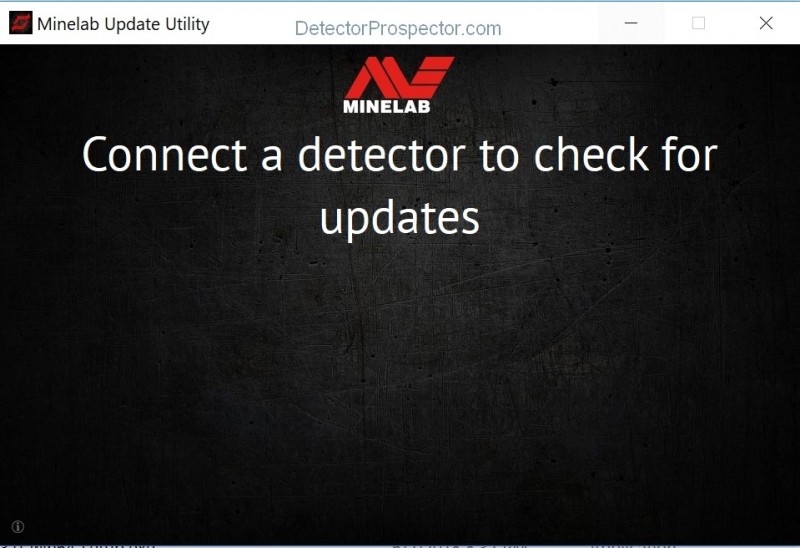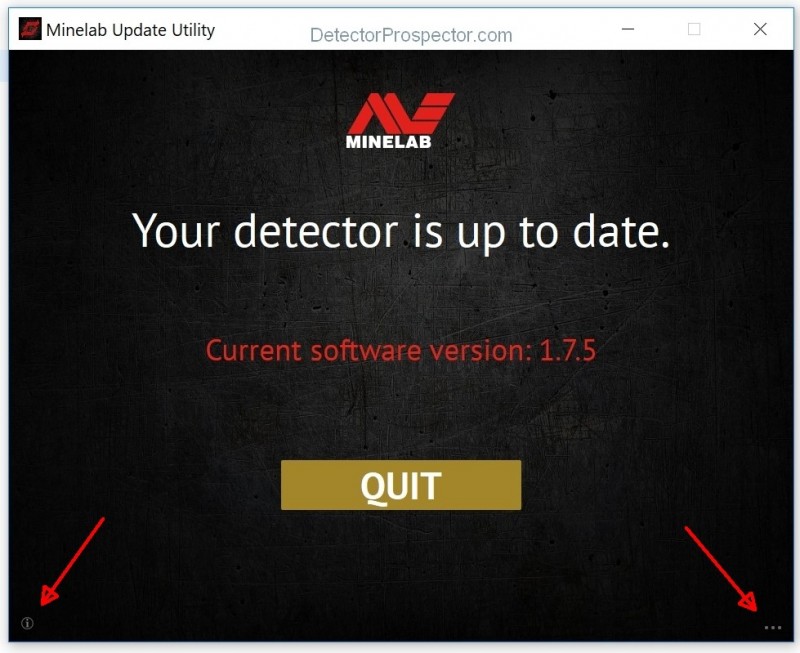-
Posts
19,777 -
Joined
Content Type
Forums
Detector Prospector Home
Detector Database
Downloads
Everything posted by Steve Herschbach
-
Hi Jin, If you want depth in Australian ground then stick with the GPX. You just have to accept that with VLF detectors that they only get the depth they are going to get. And the detector will be more difficult to use. The only reason for using a VLF is to get tiny bits a GPX might miss. Or for dealing with lots of trash. Never leave the GPX behind! Basically, if I want to go nugget detecting I am going to use my GPZ. The Equinox is not in the same class as the GPZ or GPX by a long shot. Once you go from a GPZ or GPX to a VLF you have already walked away from “more depth”. The only goal with a VLF is to 1. Get the ground including hot rocks to shut up to an acceptable level then 2. Dig everything else that sounds out outside the noise level you have chosen in step one. Trying to force a VLF to go deeper when it can’t is an exercise in futility. Once you accept that it is what it is, and tune accordingly, things get easier. There is nothing in any manual that I have read that says the bottom half of a sensitivity control is included with the intent it never get used. “The sensitivity control goes from 1 - 25 but we insist you never under any circumstances use less than 50% of the available control”. Nope, I have never read that anywhere, but I would swear it is graven into the mind of every nugget hunter out there. Lower the sensitivity as much as is required to get the machine to settle down.... end of story. Remember you are learning, and you can work on boosting the sensitivity as you get more used to the sounds, but for starting out let’s just get the machine to run halfway clean over the ground. The signals in the 11 - 13 range are either flat tin steel or hot rocks. If hot rocks you have to lower sensitivity and play with the ground balance in an attempt to alleviate them. 40 kHz or 20 kHz may also help. The last ditch solution is to either ignore or block signals in that range. Finally, I should note I consider the 11” coil to be “not a great nugget hunting coil” and part of the problem. The 6” coil is much more stable and certainly easier to pinpoint with. The main problem with the 11” is coil knock sensitivity with a combination of high gain and low recovery speeds. I hope this helps but as always Aussies are left to figure out what works best on your ground.
-

Minelab Equinox Essential Information
Steve Herschbach replied to Steve Herschbach's topic in Minelab Equinox Forum
Just very minor corrections of a few errors, but exactly what they were I don’t know. I never printed the first one so I am not the guy to ask about that. My manuals stay in pdf format on my iPad. We are talking stuff like the correction mentioned in this post. -
Yeah, me too! Guess I missed this one - welcome to the forum EMField!! Good catch BeachHunter.
-
True that. I actually find tuning the Equinox up in Gold Mode with no target id numbers rejected quite reminiscent of tuning up the White's Goldmaster series. You have Recovery Speed doing very much what White's V/SAT (variable self adjusting threshold) control is doing. The nice part is you also get the iron bias control, the ability to block target id segments, and the killer - ability to change frequencies. It is all this additional control that I really like on the Equinox, but which may make it a harder lift for some people trying to properly integrate all the controls.
-
My father and I had only a couple days on our visit - one of those three day weekend kind of trips. However, when you have the results we did a return visit was quickly planned. This time more people got involved and so my sister and brother-in-law came equipped with a Fisher Gold Bug. Armed with our new knowledge from our exploratory trip we spent more time concentrating on higher bench workings away from the creek. I was running the Compass Gold Scanner Pro again. I detected my way across one relatively flat area high above the creek, when I started getting multiple beeps per swing. I called in the troops, and a brief gold rush occurred as we all started finding gold nuggets. This bedrock hump had been mined off, probably just washed off with water directed from one of the large hydraulic giant "water cannons". It did not appear however that the miners had actually cleaned the bedrock and the cracks and crevices were loaded with gold. Steve's sister detecting bedrock with Fisher Gold Bug View from above of bedrock "nugget patch" in old bench workings I got a particularly good signal from one location in the bedrock. A little digging and out popped a 6 pennyweight (9.6 gram) nugget! Plus another one about a third that size. I could see other smaller gold mixed in the dirt in the hole. Here I am holding the nugget just above the bedrock in which it was found. Steve with 6 pennyweight gold nugget found with Compass Gold Scanner Pro It was obvious that there was a lot of smaller gold in the pockets and crevices in the bedrock. We started scraping and cleaning bedrock as best we could and filled buckets with the material. This was then carried to a gully some distance away where the material could be fed through a sluice box. The was just barely enough water to run the sluice and feed it with a hand trowel, but it proved quite effective. The bedrock was blocky and came up easily. The rubble was screened into the buckets to remove the oversize material. Finally, when the bedrock was deemed halfway clean, we would splash buckets of water on it to wash it down, and then carefully excavate the last remaining material from the pockets in bedrock. You can see wet areas remaining in the picture below. Cleaning out cracks and pockets full of gold bearing material Sluice box set up in gully using all available water In the meantime metal detecting continued. There was a hot patch of bedrock that I had been working around, but my sister was able to get into it easily with the Gold Bug, and she found a nice 4 pennyweight nugget. Steve's sister with 4 dwt gold nugget she found with Gold Bug Steve's brother-in-law sniping for gold in crevices Time was running out and so our little bedrock cleaning and sluicing operation came to an end. The results were pretty impressive for hand work with simple tools... Steve with bedrock crevicing results from sluice box And finally, my results with the Compass Gold Scanner Pro. A nice showing of chucky gold nuggets, the largest weighing in at 6 pennyweight (9.6 grams). Gold nuggets found by Steve with Compass Gold Scanner Pro My wife to be made a trip up to Chisana with me in this timeframe and so I had the 6 pennyweight nugget made into a pendant for her. She ended up telling me gold nugget jewelry was not her thing, and she gave it back to me. I sell most of my gold so this is probably the oldest nugget I still have that I found. I wore the nugget on the chain you see around my neck in the picture above for many years. I am not really a jewelry person myself but it came in handy a lot when I was at work talking metal detecting and gold, and could easily pull the nugget out to show people. I eventually did retire it to the jewelry box but still have it, so just got it out to weigh it and take this picture. The nugget is well polished from many years of wear. All in all another fabulous trip with gold found by all involved! To be continued.... Six pennyweight (9.6 gram) gold nugget found by Steve
-
Excellent cautionary tale JR. It is even easier here in the States to fall into the habit of thinking big boomer signals are large surface trash. I left one larger than yours once only to see someone else dig it - that got my attention! Odd to think that many of us dream of nothing more than finding a large nugget, but then ignore the kind of sound a monster nugget would make. The good news for me is I have been on both sides, and have dug nuggets others left for trash to make up for my lost find.
-
I always enjoy your posts Peg - thanks!
-

Recent Small Stuff I Have Found
Steve Herschbach replied to phoenix's topic in Detector Prospector Forum
Love the photo - nice gold also!! -
Great job Lunk - lots of nice gold bits! I was recently running the Equinox with 6" and Gold Monster with 5" coils and as you noted was reminded again of what a great little machine the Gold Monster is. I tend to lean Equinox just because I am a control freak, and the Equinox offers more control. Yet the GM1000 does the job amazingly well with almost no controls at all. I think which has the edge is going to be very dependent on the location. I am sure we both prefer larger gold, but any gold is way better than no gold, and as long as little gold is around I am almost guaranteed to not get skunked. The tiniest flake beats a skunk!
-

Latest News On The QED ?
Steve Herschbach replied to Reg Wilson's topic in Metal Detector Advice & Comparisons
There is a new Australian forum dedicated to the QED for those with the interest. Other links.... QED Metal Detector Website QED Detech Complete Package QED YouTube Video Instruction Series Here are a few existing QED threads... http://www.detectorprospector.com/forum/topic/2690-finally-the-qed-arrives/ http://www.detectorprospector.com/forum/topic/3099-qed/ http://www.detectorprospector.com/forum/topic/3022-qed-review/ http://www.detectorprospector.com/forum/topic/3839-qed-field-test-report/ -
I mostly mean walking very slowly. The swing rate depends on the recovery speed, etc. Usually quite slow but there is such a thing as too slow. You have to experiment with a target to find the sweep speed that works best. But I mean being far slower and far more methodical than what you are doing. It just depends on what you are doing because ground coverage does count. For that I am walking at a normal rate and swinging at a normal rate. But for "killing" a small patch of ground, sanitizing it of all targets, you have to really slow down and work hard on the whispers. From Equinox Manual page 16: Sweeping the Coil EQUINOX Series detectors are motion detectors, meaning that the coil must be moving across the ground in order to detect a target. If the coil is held stationary over a target, it will not be detected. The side-to-side detecting motion is called 'sweeping' or 'swinging', and with practice will become a comfortable and fast way to cover ground. Sweeping the coil incorrectly can cause you to miss targets or can generate false signals. Though the coil assembly is rigid and durable, sudden jolts or bangs may cause random signals and inaccurate Target IDs, as well as excessive wear and tear. Careful sweeping will ensure the coil performs to an optimum level at all times. Sweep Parallel to the Ground You will obtain the best performance when the coil is swept close and parallel to the ground at all times. This will maximise detection depth and improve the response to small objects. Avoid excessive brushing of the coil on the ground. Overlap Your Sweep Practice sweeping the coil over the ground in a side-to-side motion while slowly walking forward at the end of each sweep. Slightly overlap the previous sweep to ensure full ground coverage. An average sweep speed is 2 to 3 seconds from right-to-left-to-right. More on the above. Classic patch vacuuming techniques also call for hitting a location from multiple different directions. Nuggets can easily signal when swept from one direction and not another. Best practice involves hunting from four different directions. The fact is that the smaller the gold nuggets get, the more plentiful they are. That means I have places where I know there is small gold, and I can almost 100% of the time go back to them and find more gold by employing ever tighter control and patience. It is a game of inches or fractions of inches, such that simply removing any rubble or sticks etc. will usually reveal more gold. Most of my detector nugget testing involves going back to an old patch and just working harder than the last time. Not working harder physically, just concentrating harder and being tuned to the hilt and practicing the best coil control I can manage. And being willing to run hot and dig lots of little hot rocks or borderline wire bits if that is what it takes.
-

New Whites TDI Beach Hunter
Steve Herschbach replied to auminesweeper's topic in White's Metal Detectors
See this post - https://www.detectorprospector.com/forums/topic/7277-whites-what-is-going-on-please-with-the-tdi-beach-hunter/?tab=comments#comment-74347 -

Who Has The MX Sport Maybe The MX 7
Steve Herschbach replied to Ridge Runner's topic in White's Metal Detectors
Interesting and shows just how subjective weight, balance, and hand grips are. I don't think it is really possible to make a properly balanced detector under 3 lbs because stock coil size/weight determines how a detector will balance. The only way to properly balance a detector is to add weight under the elbow, and the obvious way to do that is put the batteries there. A certain amount of offsetting weight is needed, and reducing the eight AA batteries to four (for instance) would shave a little off the weight but also make the detector more nose heavy. I therefore consider the MX7 to be better balanced than the lighter Equinox (or Deus or any other under 3 lb detectors) and that makes for a better feel on my arm. I prefer the grip on the MX7 also. But that's just me! Do keep in mind this is a White's forum. Machine brand comparisons are best posted on neutral ground - the Metal Detector Advice & Comparisons Forum. -

Alaska Gold Forum Down
Steve Herschbach replied to Steve Herschbach's topic in Detector Prospector Forum
From Jim yesterday.... "Hi all, The New Alaska Gold Forums are up and running. You will need to register to be able to post on these forums. You can read unlimited subjects, but won't be able to post or have some of the board functions work until you register. Please go and register so I can set your permissions. It would be great if you took a minute to post something since the boards are new and there is not much there to attract or interest others. Pictures really bring a post to life. The address of the new boards is here: http://alaskagoldforum.x10host.com/phpbb//" -

Question About Hunting Tailings With Equinox 800
Steve Herschbach replied to maxxkatt's topic in Detector Prospector Forum
Generally white quartz rocks are not hot rocks, since pure quartz in invisible to a metal detector. However, there can be things in the rock that sound off. Arsenopyrite gives a strong reading but is worthless. Could be copper ore minerals or copper itself - very common in some places. And it could be gold. There are other possibilities but these are two I run into a lot If the rock has lots of visible gray sulphides or green staining the odds are one of the first couple options. If the quartz is relatively clean, or has iron staining, then gold becomes more likely. The truth is there are way, way more worthless quartz rocks than ones with gold in them. For me with an Equinox it is therefore going to take a nice positive number reading. especially in the single digits, to get my interest. If rocks are too big to pack out, I usually just find a bigger rock and break them. I don't find enough rocks like that to make hauling a crack hammer around with me worth the extra effort. However, if I was hunting tailing piles with the express goal of going after potential quartz cobbles, a crack hammer would be part of the kit. Lots of tales about hunting tailing piles at Steve's Mining Journal -
A note on Recovery Speed. The basic story is lower Recovery Speed settings draw out and elongate/enhance all audio signals. In low mineral ground and sparse targets you can in general say lower is better. In areas with electrical interference lower Recovery Speed settings tend to reduce EMI "chatter". However, the detector gets touchy in bad ground at lower Recovery Speed settings. Ground response is magnified as well as responses from hot rocks. If the Recovery Speed setting is too low the detector will not even want to ground balance on bad ground. Hot rocks will react more strongly at low Recovery Speeds, and can act to mask adjacent gold nuggets, just like a coin can be masked by a piece of trash in a park. Trash items like nails can obviously act to mask nuggets also, and so low Recovery Speeds will enhance nugget masking in trashy locations. Coil knock sensitivity is enhanced by low Recovery Speed settings. This is a problem in particular with the stock 11" coil, not so much with the 6" coil. If the coil seems overly sensitive to being bumped against things, increasing the Recovery Speed will help alleviate this. Which all gets back to that the simple out of context "lower Recovery Speed equals more depth" is an incredibly misleading statement. It is just as accurate to say that higher Recovery Speeds can reveal targets missed by lower Recovery Speeds. If a lower Recovery Speed results in a missed target due to masking, how exactly is that "going deeper"? Anyway, long story short is if you look at a lot of my earlier writing I tend to fight back hard on this idea of "lower Recovery Speed equals more depth", especially as regards nugget detecting with the 11" coil and knock sensitivity. With the 6" coil out now I am lightening up on this because the benefits of lower Recovery Speed are immediately obvious with the 6" coil and on tiny gold in particular. For covering ground I still lean to the higher Recovery Speed setting, but when down and dirty hunting a 20 square foot patch with the 6” coil at a snails crawl low Recovery Speeds can really enhance tiny targets.
-
Thank you everyone. This should not be read as the be all end all of nugget detecting with the Equinox. It is a very powerful and subtle metal detector, and so everything I wrote is just a good beginning. I am still learning little things with each new outing to new locations. One thing I think I am seeing is that Multi has built in ground canceling capability not available with single frequency detectors. It has been well noted that for many locations and regular detecting you do not need to ground balance the Equinox at all. This is because the multifrequency processing is doing a lot of the work up front and so the ground balancing procedure only need take place in extreme ground. This exhibits when nugget detecting in that hot single frequency detectors have a very touchy ground balance setting. A Gold Bug 2 for instance, you have to deal with very fine ground balance adjustments. Just a hair off in either direction, and the detector reacts very strongly to the ground. The Equinox by comparison seems to be able to fudge the setting with less dramatic negative results. This can be very handy when dealing with hot rocks. The last location I worked was northern Nevada, mildly alkali (salt) type ground. The Equinox with small coil and sensitivity 17 wanted to ground balance at 6 to make the ground not react at all. However, at this setting there were reddish rocks containing maghemite that were giving positive signals. Maghemite is one of the nastiest minerals a detector has to deal with. From Advanced Nugget Hunting With the Fisher Gold Bug Metal Detector by Pieter Heydelaar & David Johnson, page 33: ”Maghemite is gamma ferric oxide. It is red or reddish brown in color, and usually has an earthy texture. It commonly occurs in rocks that have been chemically altered by fire (forest fires, camp fires, etc.) or weathering, and in red or red brown soils. Some tropical or sub-tropical clays may contain more than 10% maghemite and may be so magnetic they will be drawn to a magnet. In many gold prospecting areas, “hot rocks”, which are of ordinary appearance but sound like gold, owe their obnoxious behavior to their maghemite content.” I played with one of these hot rocks a little. The rock went quiet at ground balance setting of 0 but now the ground was reactive. I settled at a ground balance setting of 2, which still kept the rocks quiet while still allowing for quiet operation over the ground. You can play these ground balance offset tricks with single frequency detectors, but it is much harder to get it right. Multifrequency seems to allow for more slop in the ground balance setting without the immediate negative aspects seen with most single frequency models. I have been using my Equinox in preference to my Gold Monster purely due to all the adjustability. The problem can be too much adjustability for many people. The Gold Monster basically gets the job done with almost no tuning expertise required at all. The Equinox has impressive capability also, but favors people like me that want full control over all the tuning aspects. I appreciate being able to manually ground balance, and I do like my threshold control, and therefore I lean Equinox. I admit I also like the challenge of learning new things also, and the Equinox appeals to me there also. I am not casting my Gold Monster aside completely however. There also are times when quick and dirty simplicity is all I need. When I test most nugget detectors I concentrate on their ability to find small gold. Small gold nuggets require a detector to be tuned up as hot as absolutely possible to just be able to detect the gold at all. This hot tuning however makes bad ground and hot rocks react. What really sets nugget detectors apart is not their ability to find gold. It is how well they can handle bad ground while still finding the gold that counts, and this is the reason that air tests have so little value for nugget hunters. This does mean I have not really looked for larger gold with my Equinox. If I am hunting big gold, I am more inclined to grab my GPZ 7000. Yet I suspect that the Equinox may be one of the best VLF options that exist currently outside pulse induction type technology for hunting larger gold since Equinox really does pack the punch on gold range targets. The largest nugget I have found so far with the Equinox was more an accident while chasing small gold.... 1.3 grams from my recent Alaska trip. I have proved to myself that Equinox can perform on small gold, but now I need to see how well it can do on larger gold at depth in trashy areas where my GPZ is going to go nuts on the garbage. 1.3 gram Alaska gold nugget found with Equinox and 11" coil
-
I am not aware of any changes that would make a difference for how I have been using the Equinox while nugget detecting.
-
I have been using the Deano’s cover myself and have been happy with it. Very good fit, and I like that I do not have to remove the cover to charge the detector. I do still use a screen protector as grit can get under covers like this and abrade the screen. The transparent plastic is a shiny vinyl and will flash sun at you at the right angle, but because it is a soft cover the vinyl is not perfectly flat which reduces the mirror effect.
-
Gold Nugget Detecting with the Minelab Equinox Metal detecting for gold nuggets is one of the most difficult detecting tasks, and learning to run a VLF detector in highly mineralized ground will challenge even the best detectorists. There is more to this subject then can be covered in a brief article but I will try and offer some tips to get people started with the Minelab EQUINOX for gold nugget detecting. Minelab Equinox with 6" coil at work gold nugget detecting Tiny nugget in scoop - the Equinox can find very small gold nuggets! The EQUINOX 800 has two modes that are not available on the EQUINOX 600 – Gold Mode 1 and Gold Mode 2. The two Gold Modes as far as I h e been able to determine are identical except for the default settings. Gold Mode 1 is set up with a default Recovery Speed of 6 and Gold Mode 2 is set up with a default Recovery Speed of 4. These modes employ a boosted audio that increases both in volume and pitch as a target is detected. This in turn accentuates the signal on tiny gold nuggets. The threshold is also different than the “reference threshold” employed in the other modes and is more responsive to ground changes, providing important audio feedback about changing ground conditions. The Gold Modes are similar to the threshold based all metal modes available on most VLF nugget detectors with a major difference. A target id number is displayed for strong targets and each target id number can be independently set to accept or reject. In this regard the Gold Modes are a hybrid mode with more discrimination capability than is available in normal threshold based all metal modes. Normal VLF nugget detecting relies on the operator having their ear very tuned into the threshold sound of the detector. Slight variations in the threshold tone can indicate potential targets. The threshold tone is also very sensitive to changes in the ground mineralization. This includes the so-called “hot rocks” which have mineralization different than the ground they reside in which makes the detector react to them as targets. The challenge is to get the detector to operate with a relatively smooth threshold as the coil is swept over the ground so that desired targets will stand out. If hot rocks are signaling with every sweep of the coil, then progress will be extremely slow if not impossible. Tuning a VLF detector to hunt nuggets starts with the theoretical most powerful settings, and then reduces those settings until the detector becomes stable. Every setting is a trade off, because making a detector more sensitive to gold also makes the detector more sensitive to mineralized ground and hot rocks. The key settings for the EQUINOX 800 in Gold Mode are: Frequency. Multi frequency is the default and the most powerful frequency setting, with 40 kHz and 20 kHz single frequency options. Multi is the most sensitive to gold, but also reacts the most to bad ground and hot rocks. The goal is to get the EQUINOX to run well in Multi but if bad ground or hot rocks make that impossible, going first to 40 kHz and then to 20 kHz will make the EQUINOX progressively less reactive to the ground and the hot rocks. Ground Balance. The default is ground tracking on. Tracking attempts to keep up with and smooth out the variations in the ground. In doing so it has a filtering effect and can possibly tune out the slight audio variations that come not just from the ground but from very small or very deep gold. Tracking off is therefore the most sensitive setting, with adjustments made via the Auto (pump) method or manually. Sensitivity. The range is 1 – 25 with a default of 20. Increasing sensitivity increases the audio response from all targets, plus the responses from things like electrical interference. Most importantly, too much sensitivity makes the ground itself into one giant target, and so if the detector refuses to ground balance properly then reducing sensitivity until a proper ground balance can be obtained is critical. The default of 20 can easily be too high for the worst ground, and settings in the mid to low teens may be necessary. Recovery Speed. The range on the EQUINOX 800 is from 1 – 8. The defaults are 6 for Gold Mode 1 and 4 for Gold Mode 2. Recovery speed as regards nugget detecting can be viewed as a smoothing filter. Higher settings act to smooth out audio responses from the ground and hot rocks. Lower settings enhance audio responses from weak gold signals, but also make hot rocks and bad ground stand out more. False signals from the coil bumping a rock also increase at lower settings. In general the EQUINOX will be easier to handle at higher Recovery Speed settings, with more careful coil control required at lower settings. Iron Bias. The range is 0 – 9 with a default of 6 in both Gold Modes. Lower settings reduce the chance of gold being identified as ferrous, while higher settings reduce the chance of ferrous items being misidentified as gold. Accept/Reject. The default is -9 through 0 rejected, 1 through 40 accepted. The discrimination range on the EQUINOX runs all the way into the ground signal, with ground signals in highly mineralized ground normally coming in at -9, -8, and possibly -7 though it depends strictly on the ground itself. Hot rocks can read almost anywhere, even in the positive number range in the mid-teens or elsewhere. Electrical interference is also likely to exhibit in the low negative number range. Any offending numbers including trash targets can be blocked directly, but the more numbers that are blocked or rejected come at a cost of slightly less signal strength on desired targets. Threshold. The range is 1 – 25 with a default of 12. This is normally set to be just loud enough to hear, but no more. Just a barely discernible tone. However, the threshold can also act as a backend filter. Once all other tuning has been completed, the threshold can be set lower until it is silent, or set higher than normal. Running silent can suppress small variations in the ground signal but also the weakest gold signals. Running the threshold higher than normal can smooth out weak variations, again with a subsequent loss on the faintest gold signals. My starting point (initial settings) for either Gold Mode are: Frequency: Multi Ground Balance: Auto (pump method) with manual tweaking Sensitivity: 20 Recovery Speed: 6 Iron Bias: 0 Accept/Reject: -9 through 40 accepted (either through the settings or by hitting the “Horseshoe button”) The main thing I am going to try and do is operate the EQUINOX in Gold Mode without blocking out or rejecting any target id numbers. The goal is to find settings that reduce and smooth out ground responses while reducing the signal from gold as little as possible. These two things fight each other and there are no perfect settings, but simply the best compromise possible. For some people that will mean making the machine very stable, while others may prefer hotter settings that require more audio interpretation from the operator. The first step is to find an area clear of trash, and walk a bit waving the coil over the ground. Chances are you will get lots of ground noise. Go into the settings and adjust the ground balance. This normally means pumping the coil over the ground while holding the accept/reject button (see the manual) until the ground response evens out. If the ground is highly variable with mixed hot rocks, waving the coil from side to side may work better than pumping the coil. With any luck the machine will settle right down. However, in bad ground it will not, and the solution normally will be to lower the sensitivity setting. Basically this just takes some experimentation, lowering the sensitivity and adjusting the ground balance until the detector reacts very little or not at all to being waved over the ground. If you can get the EQUINOX set to where no target id numbers are popping up at all as the coil passes over the ground but where you can still hear faint variations in the ground, you are there. Then it is simply a matter of going detecting, and digging every target that stands out above the faint ground variations present in the threshold tone. Gold can read anywhere from negative numbers all the way up into the 30’s so typical nugget detecting involves digging everything. However, most nuggets weighing under 1/10th gram will give a target id number of 1 or 2, nuggets under a gram in the single digits, and several gram nuggets reading in the teens and higher. The smallest or the deepest large nuggets will produce no target id number at all, just a variation in the threshold. In real bad ground you may have to not only reduce the sensitivity setting, but possibly even increase the recovery speed setting to 7 or 8. In ground that refuses to behave, switching to first 40 kHz and then 20 kHz will progressively detune the EQUINOX , making it easier to get a stable ground balance. Engaging ground tracking may also help smooth out the worst ground – you have to experiment. In severe ground all this may not work, with ground signals still coming in around the low negative numbers and possibly higher. Some hot rocks may read as positive numbers. This is where the EQUINOX can go to the next level. Go into the settings and reject or “notch out” the worst offending target id numbers. This will usually be -9, -8, and -7 but may include even higher numbers, including positive numbers. Block as few numbers as you can. Simply rejecting the bottom three negative numbers will usually settle the machine down a lot, especially if there is any residual electrical interference being encountered. Rejecting target id numbers does come at a cost in reduced signal strength on desired targets, but you may find now that the sensitivity level can be increased from one to several points, reclaiming that lost sensitivity. In theory if you can get the EQUINOX running stable with no target id numbers rejected you have the ideal situation. However, EQUINOX allowing some offending signals to be rejected with an attendant increase in the sensitivity setting may be the better way to go. It just depends on the situation. So far we have been trying to deal with bad ground by using various detuning methods. In low mineral ground you can go the other direction. If the detector ground balances immediately with a sensitivity setting of 20, then try higher settings. You can also try reducing the recovery speed setting from 6 to 5 or 4 or even lower. Each reduction of the recovery speed setting is fairly dramatic and you will find it suddenly very hard to get and hold a decent ground balance if you go too low with the setting. In mild ground however it can add substantially to the signal strength of the weakest targets. Finally, for the worst ground and for EQUINOX 600 owners we have other alternatives. There is no reason at all why the other modes cannot be used to nugget hunt. Park 2 and Field 2 are both very hot on small targets and offer the ability to use tones while nugget hunting. Prospectors who encounter salt lakes/salt flat situations would do well to remember the Beach modes as possible last ditch settings. Either Park 2 or Field 2 can make for very good nugget hunting modes. I prefer to use Park 2 as a base because by default Field 2 blocks out or rejects the key target id numbers 1 and 2. Small gold nuggets read there, so using Park 2 makes sure somebody will not accidentally reject nuggets in that range. You can use Field 2, but beware those blocked numbers and adjust accordingly. For Park Mode 2: Frequency: Multi Ground Balance: Auto (Ground pump method with manual tweaking) Sensitivity: 16 – 25 Recovery Speed 800: 4 - 6 (default is 6) Recovery Speed 600: 2 - 3 (default is 3) Iron Bias: 0 Accept/Reject: Everything accepted, rely on tones (alternative reject -9, -8, and -7 if too much ground feedback) I have suggested accepting everything, and then using the two tone mode to hunt by ear. If trash is minimal then set the tone break lower than normal, so that 0 and several negative numbers read as non-ferrous. This way you can have ground signals reading as low tones (and possibly at a lower volume) and signals from gold as higher tones. Again, this works well with both EQUINOX models. To sum up, I suggest trying to use the EQUINOX 800 in the Gold Modes with no target id numbers rejected. Tune up just like any normal nugget hunting detector, and dig all decent audio signals. Some nuggets may deliver a negative number response or no number at all. A secondary method for more difficult ground is to reject or block out offending ground and hot rock signals. And a third method for both EQUINOX 800 and 600 owners involves using the Park 2 mode as a nugget hunting mode. That should give people plenty to experiment with. Nugget detecting can be very challenging, but learning to do so means you will learn how to wring every bit of performance possible out of your EQUINOX , and that can benefit you in other areas of detecting as well. Good luck! Steve Herschbach DetectorProspector.com Earlier post on same subject Gold found in Alaska by Steve with Minelab Equinox Gold found in California and Nevada with Minelab Equinox
-
Sorry Simon, got sidetracked. The Compass Gold Scanner units were ahead of their time as general purpose detectors running at 13.77 kHz. They were as deep as any VLF I have used since, but were very touchy at high gain levels (sound familiar?) and had to be worked at a snail's pace.
-
This information seems to have been left out of the update instructions. When starting the software this is the first screen you see. If you connect and have not updated you will see the new version offered up automatically. If you have already done the update you will see this screen. In either case, look carefully in the lower corners. There is an info screen accessed in the lower left corner (a tiny "i" in a circle) and in the lower right there are three small dots that access the rollback menu. The rollback screen looks like this (shipping software version 1.5.0) You can switch between versions as often as you wish.
-
Hi Mitchel, All my forum posts are written directly on the forum. The latest versions save work automatically in event of a computer crash, etc. Try it. Start a post, but don’t actually submit it. Leave the site, then come back and start a post in the same location - the stuff you typed before should be there. However, I do prefer using a PC instead of my phone since there are more formatting options in the editor menu. The pictures of course get edited offline and then imported. I do have a bad habit of banging stuff out and posting too quickly. Then noticing errors later and having to edit. I am glad you are all enjoying the tale. I will be slowly bringing it all up to the present and my visit to Chisana this last July. Lots more to come still.

